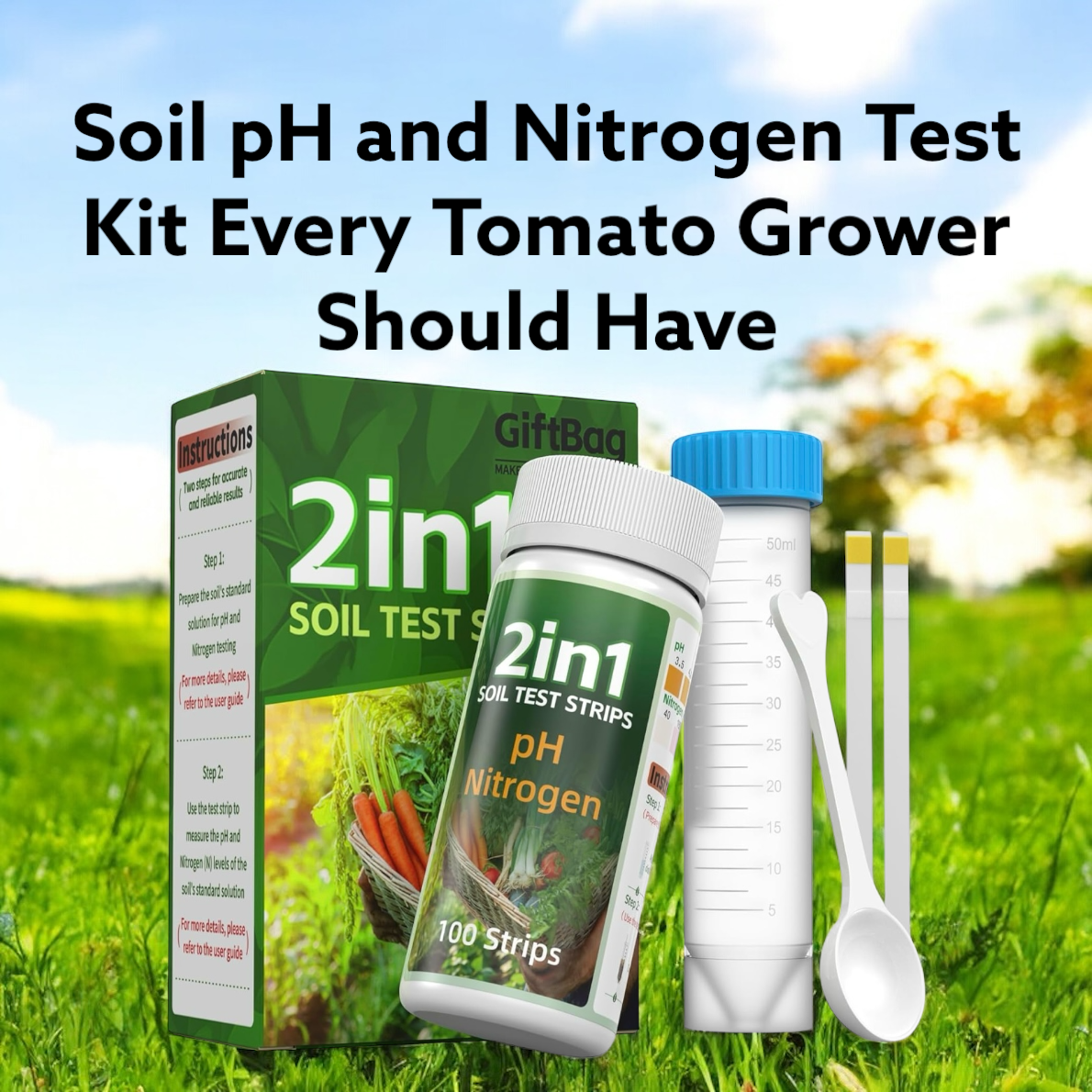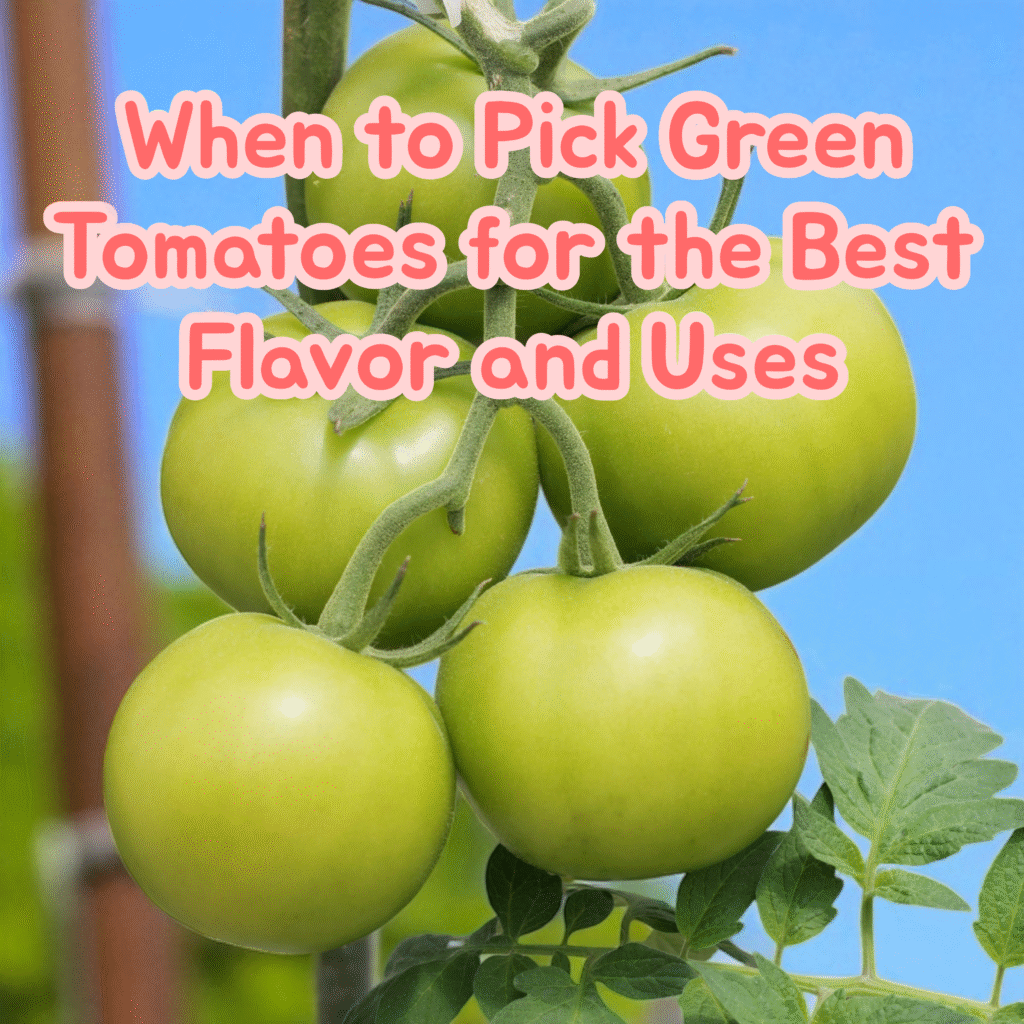
Why Picking Green Tomatoes Can Be a Smart Move
I’ll admit it — when I first started growing tomatoes, I thought picking them while they were still green was gardening blasphemy. I mean, isn’t the whole point to let them turn bright red on the vine? But after a few seasons (and a few heartbreaking frosts that wiped out my last harvest overnight), I learned that picking green tomatoes at the right time can actually save your crop and open up a world of recipe possibilities.
For one, green tomatoes have their own unique flavor — tangy, firm, and perfect for things like fried green tomatoes or tangy salsa. And two, the right kind of green tomato will keep ripening off the vine, just like I explain in our guide on why tomatoes ripen off the vine. Once I learned the science behind it, I realized that leaving them on the plant too long isn’t always the best choice.
Understanding the Ripening Stages of a Tomato
If you’ve ever stood in your garden staring at a sea of green tomatoes wondering if they’re ready, the trick is understanding ripening stages. Tomatoes go from immature green → mature green → breaker stage → full color.
The “mature green” stage is when a tomato is technically still green but has reached its full size and has started producing the sugars and compounds that give it flavor. That’s when you can pick it for certain recipes, or if bad weather is coming. The “breaker stage” is when you see the first blush of pink or orange on the blossom end — and that’s my personal favorite time to pick, as I explained in detail in why I pick tomatoes at the breaker stage every time.
Once you know what to look for, you’ll never second-guess yourself again.

The “Feel Test” and Other Clues Your Green Tomatoes Are Ready
One of the easiest ways to know if a green tomato is ready to pick is the “feel test.” I gently cup the tomato in my hand and press lightly. If it’s rock-hard and unyielding, it’s still immature. But if it gives just a little without feeling mushy, it’s likely mature green and can be harvested.
Other signs I watch for:
- A slight color change at the blossom end — it might turn slightly lighter or have a faint yellow hue.
- A smoother, glossier skin compared to the duller look of immature fruit.
- A tomato that releases easily from the vine with a gentle twist.
If you’re still unsure, I suggest trying one and letting it ripen indoors using the same method I use in our how to ripen tomatoes indoors guide. You’ll quickly learn the difference between one that’s ready and one that’s too early.
Picking Green Tomatoes Before the Frost Hits
If you’ve ever woken up to a surprise frost in September, you know the heartbreak of seeing your tomato plants turned to limp, blackened mush overnight. Frost is a tomato’s worst enemy — even a light frost can damage the fruit beyond repair.
When the forecast dips below 40°F, I start making a plan. If there are just a few cool nights, I might cover the plants with frost cloth or old bedsheets. But if a real frost is coming, I don’t take chances — I pick every mature green and breaker-stage tomato I can find. It’s better to have a basket of green tomatoes that can ripen indoors than to lose them all on the vine.
If you’re unsure how to tell which green ones to grab first, remember: size, firmness, and slight color changes are your best clues. And yes, you can still turn them into delicious meals — I’ve used frost-rescued tomatoes in everything from salsa to frozen tomato packs for winter cooking.
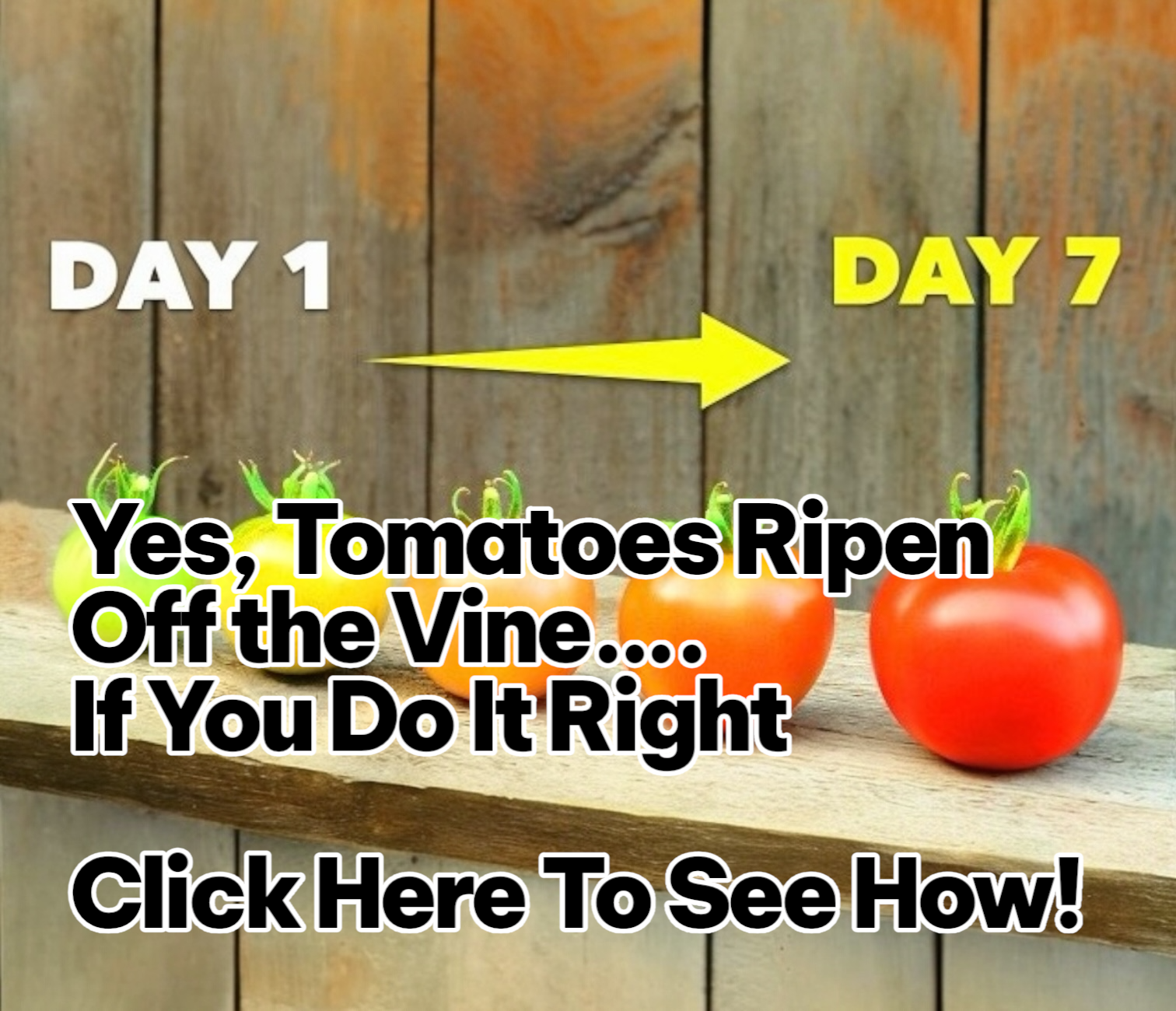
How Picking Green Tomatoes Can Help Your Plants
Here’s something I didn’t realize until a few years into gardening — picking some green tomatoes early can actually help the plant focus on ripening the rest of the fruit faster. When a tomato plant is overloaded, it spreads its energy thin trying to finish every single tomato at once.
By taking off some mature green fruit, you’re lightening the load. This means the plant can put more energy into the remaining tomatoes, especially if you’re near the end of the season. I first learned this trick while troubleshooting why my plants weren’t producing much late in the season — something I go into in detail in why tomato plants stop flowering. Sometimes, giving them a little relief is all they need to keep going strong.
Best Ways to Ripen Green Tomatoes Indoors
Once you’ve picked your green tomatoes, it’s time to help them finish ripening indoors. I’ve tried just about every method out there, and here are my top three:
- Paper Bag Method – Place tomatoes in a paper bag with a ripe banana or apple. The ethylene gas speeds ripening.
- Cardboard Box with Newspaper – Spread them out in a single layer with newspaper in between. Check daily for soft spots.
- Sunny Windowsill – The old-school way — just know that this can make them ripen unevenly if you’re not turning them.
If you want a more detailed guide, I covered my full process in how to ripen tomatoes off the vine.

Cooking With Green Tomatoes (On Purpose)
Not every green tomato has to be turned red. In fact, some of my favorite recipes start with intentionally green tomatoes. Fried green tomatoes are the obvious classic, but they’re just the beginning. You can make tangy green tomato salsa, pickle them for a crunchy snack, or even toss them into stews for a unique flavor.
If you’ve got a big haul, consider freezing them for later. You can use the same method I described in my guide on freezing tomatoes for winter cooking — just skip the ripening step and freeze them green. Trust me, they hold up surprisingly well.
Picking Green Tomatoes to Avoid Pest Damage
Here’s a big reason I sometimes pick tomatoes early — pests. Hornworms, stink bugs, and even squirrels can destroy a perfectly good tomato overnight. If I notice that my plants are under attack, I’ll pick any tomatoes that are close to ready, even if they’re still green.
This is especially important if you’re already seeing signs of damage or disease. Picking early and ripening indoors can save a tomato that would otherwise get chewed up before you can enjoy it. I once lost an entire row to squirrels in a single week — after that, I got a lot more proactive about harvesting early, just like I do when deer and rabbits threaten my plants. My post on stopping rabbits from eating tomato plants dives deeper into how I protect my harvest.

How Weather Fluctuations Affect Ripening
If there’s one thing that can throw a wrench in tomato ripening, it’s unpredictable weather. I’ve had stretches where my tomatoes were nearly there, then a week of cloudy, cool days slowed everything down to a crawl. On the flip side, a sudden heat wave can make fruit soften too fast, which isn’t always ideal.
When the weather starts bouncing between hot and cold, I’ve found it’s safer to start picking more mature green tomatoes. If you’re unsure about timing during weird weather, check out my post on why I pick tomatoes at the breaker stage. It explains why that slight color change can be your best insurance policy against climate curveballs.
When to Pick Green Tomatoes for Fried Recipes
If you’re growing tomatoes with fried green tomatoes in mind (and honestly, who can resist?), the trick is to harvest them when they’re firm but not rock-hard. You want a little “give” when you squeeze them gently.
I’ve found that tomatoes about the size of a tennis ball work best for frying, though larger slicers also work if you want big, hearty rounds. For extra convenience, I sometimes pick more than I need and store them using the same tips from my freezing tomatoes for winter cooking guide. That way, I can whip up a plate of fried green tomatoes even in January.
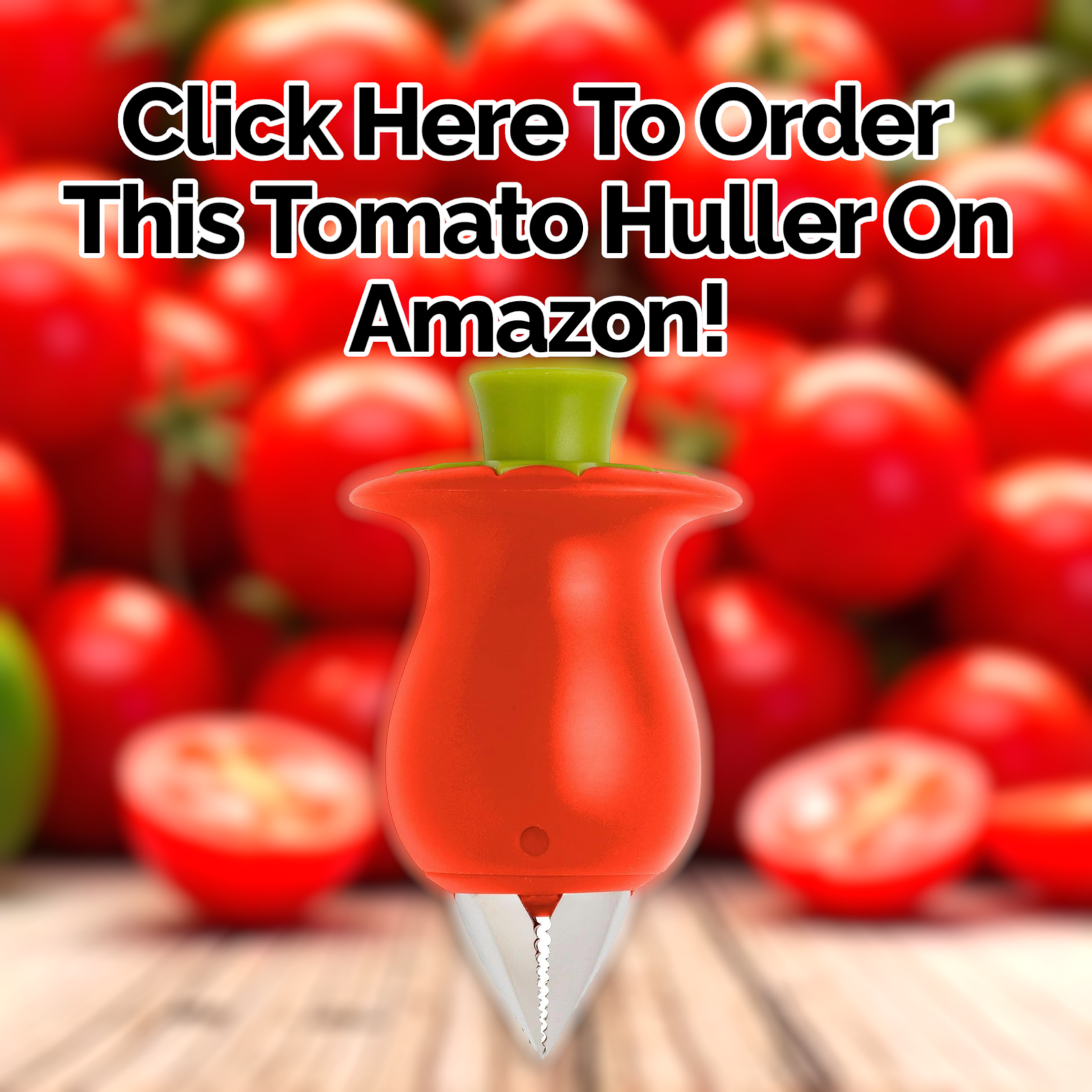
How to Tell the Difference Between Mature Green & Immature Green Tomatoes
Here’s a common mistake I made in my early gardening days — thinking all green tomatoes are the same. Truth is, mature green tomatoes are nearly ready to turn color, while immature green tomatoes are far from ripening and often taste bland.
Mature green tomatoes tend to have a slight “sheen” and a full, rounded shape. The gel inside the tomato is starting to form, and the seeds are well developed. Immature ones are smaller, harder, and lack that glossy surface. If you cut one open and see watery, undeveloped seeds, it’s not ready yet. This same principle is why I talk so much about timing in my article on when to fertilize tomato plants for juicy results — knowing plant maturity stages matters for everything you do in the garden.
Harvesting in Stages for a Steady Kitchen Supply
One trick I use to avoid getting swamped with too many ripe tomatoes at once is stage harvesting. Instead of picking everything that looks ready, I harvest a few green ones every couple of days. This way, some are ripening on the counter while others are still out on the vine.
It’s the same approach I use during peak season when tomatoes ripen faster than I can eat them — I pull a mix of green and breaker-stage fruit, which helps reduce plant stress and keeps my kitchen stocked without waste. If you’re curious how that breaker stage fits into the mix, my post on why tomatoes ripen off the vine if you do it right explains exactly how to make that work.

Common Mistakes When Picking Green Tomatoes
I’ve made just about every tomato-picking mistake you can imagine. One of the most common is pulling too hard, which can damage the stem or even break a branch. Instead, I give the tomato a gentle twist — if it’s mature enough, it’ll pop off easily.
Another mistake? Leaving the stem too long. A sharp stem end can puncture other tomatoes in storage, speeding up spoilage. And while it’s tempting to grab anything green before frost, rushing immature fruit means you’ll end up with tomatoes that never ripen or taste flat. This is exactly why I stress in my breaker stage tomato guide that not all green tomatoes are created equal.
How to Store Green Tomatoes Before Ripening
If you pick a batch of green tomatoes and don’t want to ripen them right away, you’ll need to store them carefully. I spread mine in a single layer in a cardboard box or shallow basket, making sure they’re not touching. A cool, dark place works best for slowing ripening without risking rot.
I’ll sometimes wrap each tomato loosely in newspaper, which helps absorb excess moisture. If you want them to ripen faster later, just move them to a warmer, brighter spot — or try the paper bag trick I shared in my post on tomatoes ripening off the vine.
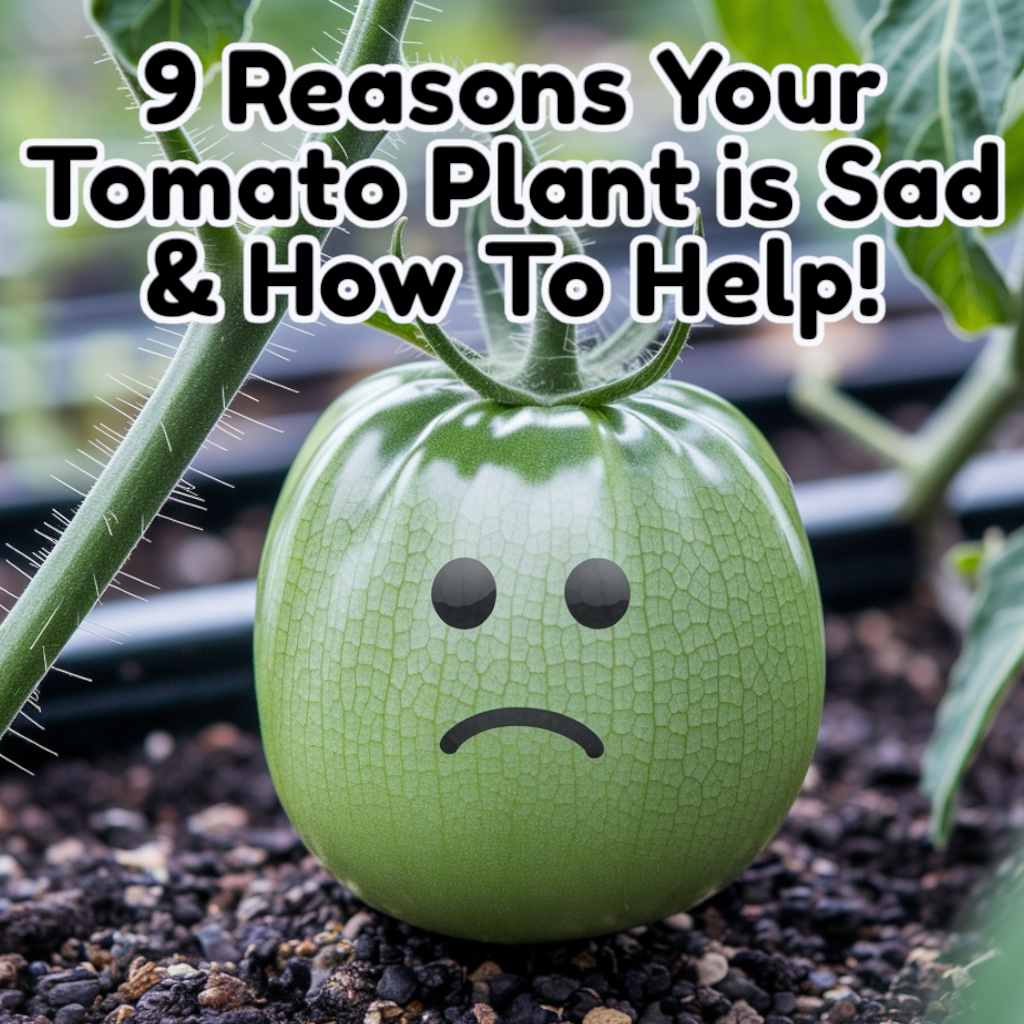
End-of-Season Strategy for Green Tomato Harvest
When the first frost warning pops up, I go into “garden triage mode.” I’ll scan the plants for any tomatoes that are close to maturity and pick those first. Then, I’ll grab the smaller mature greens that still have potential. Anything tiny and immature usually goes straight to compost or gets tossed to the chickens.
Sometimes, I’ll pull the entire plant — roots and all — and hang it upside down in the garage. The tomatoes often continue to ripen slowly this way. And if you end up with way more green tomatoes than you can use, my go-to move is freezing them whole, using the no-blanching method from my winter tomato cooking guide.
Vine-Ripened vs. Breaker Stage vs. Picked Green — My Taste Test
Over the years, I’ve done plenty of side-by-side taste tests, and here’s what I’ve noticed:
- Vine-Ripened Tomatoes – These have the deepest, sweetest flavor but also the highest risk of splitting or heat damage if you leave them too long. In peak summer, a single day can be the difference between perfect and overripe.
- Breaker Stage Tomatoes – My personal favorite. They’re just starting to turn pink, detach easily, and ripen beautifully on the counter. I explained why I swear by this stage in my breaker stage tomato guide.
- Picked Green Tomatoes – Best if you have to beat frost or pests. They’ll ripen indoors, but the flavor is usually a little less sweet. Still, they’re fantastic for fried green tomatoes or making green tomato salsa.
For me, the sweet spot (literally) is picking most of my crop at breaker stage, then enjoying a few vine-ripened beauties right from the garden when I can keep a close eye on them.

My Last Thoughts for you on Picking Green Tomatoes at the Right Time
The truth is, knowing when to pick green tomatoes is part science, part gut feeling you develop with experience. Once you start noticing the little signs — from the sheen of the skin to the feel of the fruit — you’ll get a knack for it.
And whether you’re aiming for perfect fried green tomatoes, preventing frost damage, or just keeping your plants from getting overloaded, the more you practice, the better your harvest will be. I’ve learned that the best gardeners are the ones who aren’t afraid to experiment a little — and that’s exactly how I figured out half of the tips I’ve shared here.
As an Amazon Associate we earn from qualifying purchases through some links in our articles.
